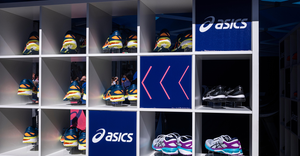December 1, 1999
Dawn Amore
Computers are becoming as ubiquitous as televisions in American homes. But as newer, faster and cheaper computers are churned out, where do the obsolete systems go?
A new study by the National Safety Council's (NSC) Environmental Health Center, Washington, D.C., confirms what many have suspected - that relatively few old personal computers (PCs) are being recycled. Instead, most are stored in warehouses, basements or closets, or have met their end in municipal landfills or incinerators.
According to the NSC's Electronic Product Recovery and Recycling Baseline Report, "Recycling of Selected Electronic Products in the United States," approximately 20.6 million personal computers became obsolete in the United States by 1998, while only 11 percent - about 2.3 million units - have been recycled. (This only includes PCs shipped in 1992 or later. It does not include older PCs already disposed of or those in storage or in use.)
Compared to the 36.7 million PCs shipped from manufacturers in 1998, the percentage of PCs recycled dwindles to about 6 percent. In contrast, for major appliances, including washing machines, water heaters, air conditioners, refrigerators, dryers, dishwashers, ranges and freezers, the ratio of units recycled to units shipped was about 70 percent in 1998.
The study, conducted by Stanford Resources Inc., San Jose, Calif., notes sales and recycling information for eight equipment categories:
* Desktop PC central processing units (CPUs);
* Mainframe computer CPUs;
* Workstation computer CPUs;
* Laptop computers;
* Cathode ray tube (CRT) computer monitors;
* Computer peripherals, for example, printers, plotters and scanners;
* Telecommunications equipment (routers and switches); and
* CRT consumer television sets.
A total of 123 firms were surveyed, including recyclers, third-party organizations that refurbish equipment, original equipment manufacturers (OEMs) and large corporate users of electronic equipment. As for electronics recycling's future, the report forecasts:
* In 2002, the number of desktop PC CPUs reaching obsolescence will, for the first time, exceed the number of desktop PC CPUs shipped by approximately 3.4 million.
* The cumulative total of PC CPUs that will have become obsolete between 1997 and 2007 will be nearly 500 million.
* Federal government donations of used PCs to schools have met with limited success because of complex federal requirements that apply to the transfer of equipment ownership.
* And, growth in desktop PC CPU recycling will be significant as more units in storage are sent to recyclers and as household penetration of PCs (currently about 50 percent) continues to rise.
NSC hopes these forecasts and recycling rates will be useful in strategic planning and policy decisions at federal, state and local levels, as well as help nonprofit organizations join with manufacturers or government agencies to promote recycling.
The report resulted from a NSC Electronic Product Recovery and Recycling Roundtable - an organization founded in 1997 comprised of representatives from electronic equipment manufacturers, recyclers, academic institutions, and federal, state and local government agencies concerned about the increasing volume of obsolete electronic equipment. The group's mission is to promote environmentally and economically responsible management of electronic products throughout their life cycle.
Hewlett-Packard and IBM, both Roundtable member, are examples of how manufacturers can boost recycling rates. Each month at product recovery centers in France, Germany and California, Hewlett-Packard reuses or recycles more than 3.5 million pounds or 99 percent by weight of materials received from its customers and company operations.
Likewise, IBM operates 10 materials recovery centers around the world, with additional locations supporting part returns and regional collection. In 1997, these operations processed more than 62,000 metric tons of manufacturing scrap equipment, obsolete IBM-owned machines and customer-returned equipment. More than 90 percent was recycled and less than 5 percent was sent to landfills.
Although some firms process an impressive amount of equipment, the NSC report found electronics recycling is in its formative stages and requires more infrastructure development to collect and process the volumes of obsolete equipment.
According to the report, equipment manufacturers will take a more aggressive approach to product stewardship in the future in response to customers' needs and other market forces. The volume of obsolete equipment also will continue to grow along with the rapid pace of technological change, emphasizing the need for more recycling. Overall, the report concludes that an efficient, workable electronics recycling system will depend on partnerships and collaborations among manufacturers, transportation providers, recyclers and third-party organizations.
You May Also Like


